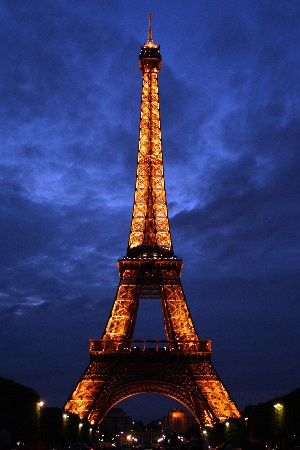5.2 Analogy between heat and mass transfer: exercise 2 (example)

Every seven years, the Eiffel tower has to be painted. For this, they have to use 50⋅103kg of paint. We are going to estimate the time it takes for the paint to dry. The paint consists of 10% of a solvent, which evaporates from the paint and as a result the paint becomes dry. The following data about the Eiffel tower and the paint is known:
| Data: | |
| Thickness of the paint layer | δ=1mm |
| Surface area to be painted | 40⋅103m2 |
| Sherwood number drying paint | Sh=5 |
| Average concentration paint solvent at the surface | c∗¯=0.5 kg/m3 |
| Diffusivity of paint solvent | D=10−9 m2/s |
The way that we want to estimate the time it takes for the paint to dry, is that we assume that the paint stays equal in thickness throughout the drying process, and that, over time, the solvent disappears from this layer of paint by diffusing into the air. The solvent leaves the paint in such a way that this average concentration c∗ will always be kept constant.



